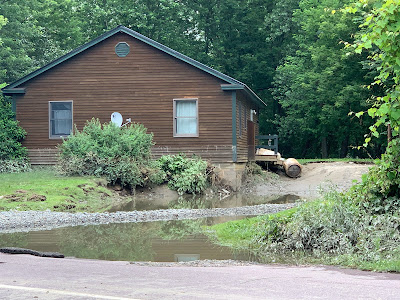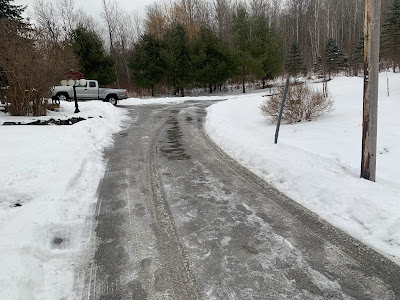 |
After 12 years, a defamation lawsuit against provocateurs by
noted climatologist Michael Mann has finally gone
to trial. Mann's detractors saying he's attacking free
speech, but bloggers being sued compared Mann to
criminals and even child molesters. |
Talk about a slow court proceeding!
Michael Mann, one of the world's most prominent climate scientist, is finally getting his day in court. This more than a decade after he filed suit against climate deniers he says defamed him.
According to Scripps News Service:
"A renowned climate scientist filed a lawsuit against a right-wing blogger and an analyst for defamation, and after more than a decade, the trial begin on Thursday.
Michael Mann, an earth and environmental scientist from the University of Pennsylvania, filed the 2012 court case, claiming that online attacks on his work constituted defamation."
The long running case is important because it could set parameters as to how far people and activists can go in attempting to take down a perceived enemy. I'm very nearly a First Amendment absolutist, but I still think there needs to be limits on how badly one can lie about and attack someone.
Mann is suing Rand Simberg, an analyst at the Competitive Enterprise Institute mainly because he published a blog post comparing Man to a convicted child molester. Mann is also suing Mark Steyn, who fawningly quoted Simberg and said Mann's research was, quote, "fraudulent."
It's interesting that if you look up that blog post now, there's a disclaimer at the bottom saying "Two inappropriate sentences that originally appeared in this post have been removed by the editor."
Hmmm.
I worry if Mann loses, the type of baseless attacks you see on social media all the time will get even worse. There's already death threats galore out there, mostly by hard right winters who wilt when somebody says something, um, factual.
Mann's suit might have a chilling effect on those that stalk, harass, threaten and all that. But unlike critics of his legal moves, I seriously doubt it will chill real journalism in the process.
I regard Mann as Mr. Hockey Stick for his clear, relatable explanation of world temperature trends and how climate change influenced those trends.
Way back in 1998, Mann famously plotted in a graph that showed that global temperatures remained essentially flat for the past millennium before spiking upward dramatically after 1900. His graph looks like a hockey stick with its blade upturned.
This easy to understand graph was featured prominently in widely read and watched publications, and thus he greatly helped galvanize the public's understanding of climate change.
Right wing climate deniers were having none of this.They screeched and yelled that global warming is a hoax and they accused Mann of illicitly manipulating data to support his conclusions. In short, they said Mann's hockey stick was one great big fake.
Those allegations prompted an investigation of Mann and his science by the federal Environmental Protection Agency, the National Science Foundation and seven other organizations.
When you have that many powerful groups investigating you, that could leave the public wondering if you're on the up and up.
All the organizations that investigated Mann found that his science was solid, all of his research was properly conducted, and the facts he presented in his work were indeed facts. The hockey stick was proven to be a real thing.
While all this was going on, groups widely believed to be backed by billionaire Charles Koch repeatedly bombarded Mann with freedom on information demands, probably in an effort to interfere with his work and/or discourage him from publishing more papers.
The deniers were also probably pretty mad that in 2007, Mann, and with Al Gore and people with the Intergovernmental Panel on Climate Change, won the Nobel Peace Prize for establishing a consensus on the link between what us humans do and global warming.
With the braying climate deniers still besmirching his reputation, it was Mann's turn to get pissed. As Scripps describes it:
"After his investigation included, Mann filed a lawsuit against the two organizations and two authors for defamation and intentional infliction of emotional distress."
The Competitive Enterprise Institute and the National Review publishes the right wing bloggers' attacks. But in 2021 courts ruled the CEI and National Review would be dropped from Mann's lawsuit because the bloggers were not employees of the two organizations.
Still the people over at the National Review are still really peeved at Mann, apparently.
The National Review had a pretty, um, rich take on the whole mess earlier this month. They're calling it "Michael Mann vs. Journalism" as if the people constantly harassing the scientists and repeatedly making false accusations were intrepid journalists from the New York Times or something.
This quote from the National Review piece criticizing Mann's lawsuit really got my blood boiling:
"Are Americans able to disagree about hotly contested political topics without being harassed, dragged into court on the most specious of pretexts and subjected to ruinous legal fees?"
Why, yes! Yes they are! Or at leas they should be. I hardly think thousands of frivolous Freedom of Information Requests, demonstrably false accusations .... are Americans high-mindedly "disagreeing about hotly contested political topics."
After all, with all the peer reviews and such, the people Mann is suing knew, or should have known, that Mann did not falsify his research. So there's one of Mann's plausible arguments that he was defamed. Not to mention that comparison to a serial child molester.
Funny how the extreme right wing, whenever they encounter someone politically they don't like, get the vapors and start accusing people of sexual assault and deviance.
Sure, I'd be annoyed with Mann to say the least if he sued journalists or others for merely asking challenging questions about his work. That comes with the territory.
The National Review is correct in stating that First Amendment case law allows people to make vehement and caustic statements and arguments without fear of a successful lawsuit against them. But does the First Amendment allow making knowingly false statements about somebody, especially if those false statements are designed to wreck a person's reputation?
I'm not sure why it's taken so long for Mann's suit to go to trial. I mean, 12 years is a long time, even by the standards of an often slow justice system we have these days.
I do hope Mann wins. Sure, we have the right to criticize whoever we want. Simberg could have made his case against Mann vehemently and aggressively even though he was wrong. But he took the schoolyard bully approach by resorting to false accusation of heinous crimes. .
That's definitely a bridge too far.


























